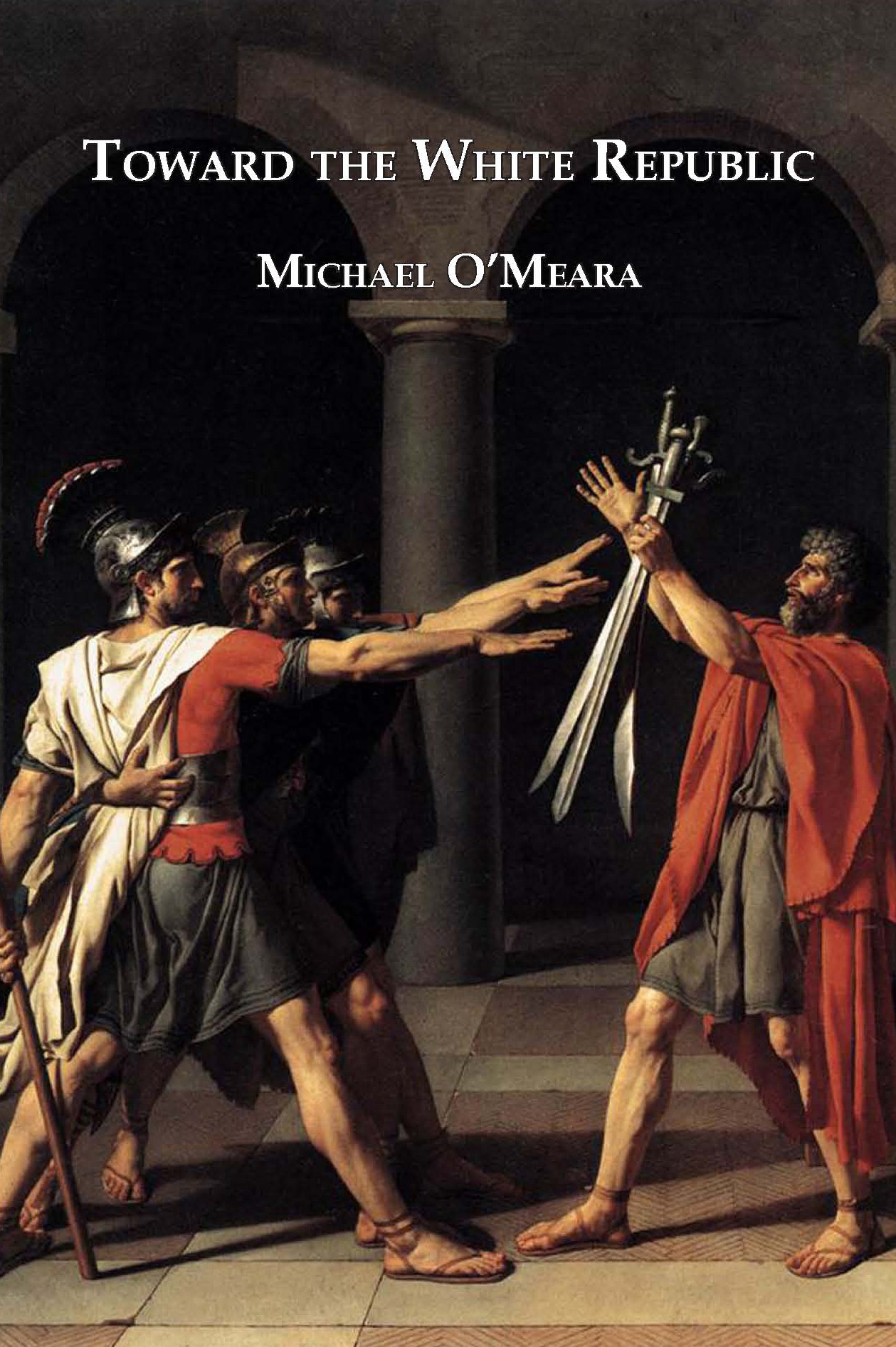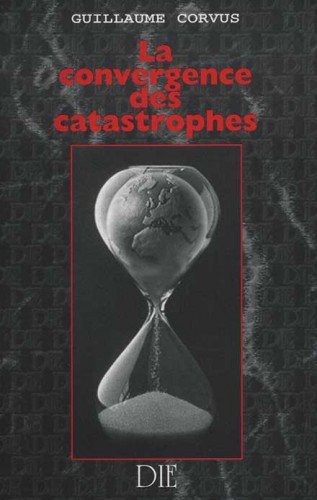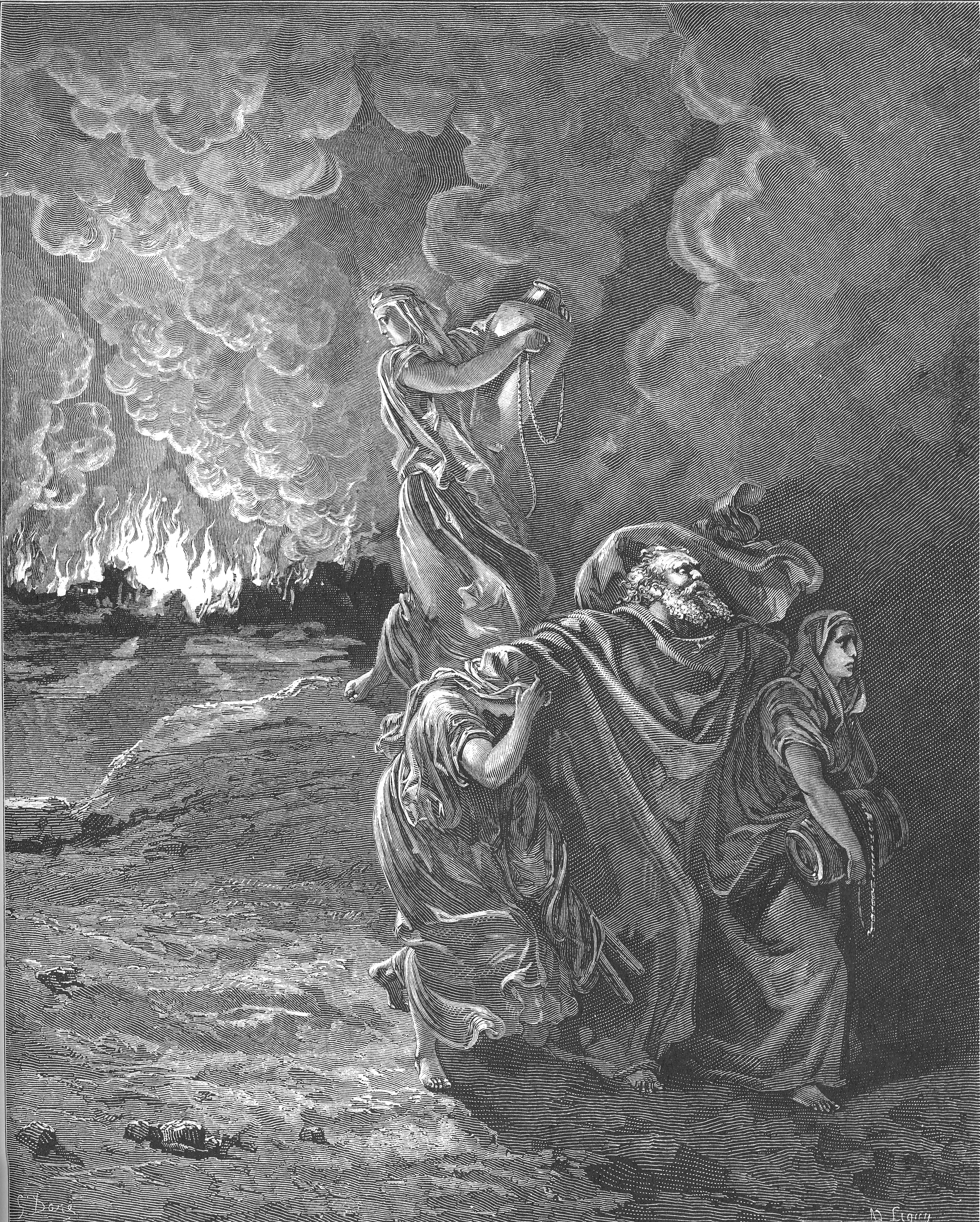The below essay, “US, SU: Same Scenario?” is the thirteenth essay of Michael O’Meara’s book Toward the White Republic, available from Counter-Currents Publishing here.

Book review
of Dmitry Orlov’s
Reinventing Collapse: The Soviet Example and American Prospects (Gabriola Island, Canada: New Society Publishers, 2008)
Despairing of my people’s passivity, I have often thought the collapse of the United States might be the one thing to turn them against the system that seeks their destruction.
This “catastrophist” perspective is, admittedly, a strategy of desperation. For collapse (what Joseph Tainter calls a “recurrent feature of human societies”) may delegitimize the existing system and make whites more receptive to their racial/national interests, but, in a worst case scenario, it could pose problems even more threatening than those of the last 60 years.
The literature of collapse is consequently of the utmost relevance, especially now that the “American Century” seems to be nearing its inglorious end.
Of the numerous works on fallen civilizations, perhaps the most pertinent are, for obvious reasons, those related to the Soviet collapse of 1991. Hence the propitiousness of Orlov’s recently published work.
A computer engineer by training, Orlov and his Russian Jewish family emigrated to the US in the 1970s. He has since maintained ties with the land of his birth, having returned during those periods leading up to, traversing, and following the Soviet collapse. Writing from a radical ecological perspective critical of industrial civilization (which he implicitly—Hebraically?—associates with white civilization), Orlov suggests what collapse entailed in the SU and why the US is no less a candidate.
His book, though, is no work of scholarship.
“I am not,” he writes, “an expert or a scholar or an activist. I am more of an eyewitness. I watched the Soviet Union collapse and this has given me the necessary insight to describe what the American collapse will look like” (p. vii).
He accordingly spends little time sketching the big picture—the structural forces driving the collapse—and, instead, concentrates on its “micro-scale” processes and experiences. This makes his book a “personal” work, without claim to scientific authority, but nevertheless one that is very readable and informed by the all-important “human” dimension of collapse.
Despite their different methods and styles, Orlov sees the two 20th-century superpowers as “antipodes” of the same techno-economic civilization committed to social management, economic growth, material accumulation, world domination, and the realization of the Enlightenment vision of a totally rationalized world.
As such, Orlov argues that the US and the SU both sought a better life through science, approaching every human problem in terms of a technical fix. They both were militaristic, imperialistic powers who, through direct or proxy wars, made a mess of the international arena and, though Orlov doesn’t mention it, introduced reforms in the Third World that has caused it to grow out of control; they both devoted endless fanfare to celebrating their democratic, egalitarian institutions, however fraudulent; both assaulted popular beliefs and values in the name of a higher rationality, discouraged traditional social relationships, created meaningless, uncreative forms of work, exalted materialist values over others, repressed dissent, recruited corrupt, venal elites—and, most seriously, cared little or nothing about the white, or European, race, though Orlov doesn’t actually think this. It might be added, and this too isn’t in Orlov, that the US and the SU both were social experiments that favored Jews, making them, and their values, dominant.
The list of similarities goes on. But the basic point—that the US and the SU were techno-economic civilizations devoted to roughly analogous worldviews at odds with nature and the nature of ourselves—seems rather indisputable. As such, one civilizational model collapsed, and the other, for roughly similar reasons, now faces the prospect of a similar collapse.
Orlov gives no credence to the Reaganesque bombast that the United States defeated the Soviet Union in the Cold War. He argues that its collapse had little to do with ideology and even less with American influence. Instead, he attributes it to the SU’s “chronic underperforming economy, coupled with record levels of military expenditure, trade deficit and foreign debt” (p. 8). These economic problems made it increasingly difficult for “average Russians” to get by.
When Soviet reformers under Mikhail Gorbachev at last attempted to fix the centrally-planned stagnation, they couldn’t. This failure, combined with military humiliation in Afghanistan and the nuclear disaster at Chernobyl, so discredited the Soviet state that it imploded.
Given that Orlov’s book appeared before the US financial meltdown of September 2008, it looks mainly at those structural weaknesses in the US economy that most resemble those of the former SU—rather than at that institutionalized system of fraud responsible for pulling off one of the great historical swindles.
Stressing the inherent flaws in the US economy and noting that it has taken a couple of decades for the US to catch up to the SU, he suggests that the US may soon face a similar fate.
Like many ecologists, he rejects the facile conviction that modern society is exempt from the rise-and-fall cycles characteristic of pre-industrial societies or that present rates of economic and population growth can continue indefinitely.
The United States, he sees, is especially vulnerable to collapse, due to the petroleum basis of its economy. He points out that the US, with its “energy-intensive model of empire,” is more dependent on cheap oil than any other industrial economy, that its crude oil production “peaked” in 1970, and that three-quarters of its energy is now imported.
Any rise in oil prices will consequently be paid for in declining economic growth and higher food prices (agriculture being petroleum-intensive). Once the era of cheap energy comes to an end (sometime supposedly past its peak), world economies will be forced to undergo changes as significant as those that accompanied the onset of industrialization. This will lead to further decline and ultimately to collapse—which Orlov, citing the archdruid John Michael Greer, defines as that condition whereby “production fails to meet maintenance requirements for existing capital” (p. 2). That is, when the declining economic system starts “consuming” its infrastructure (cannibalizing itself, in effect) to compensate for declining incomes, it will simply hasten the inevitability of its demise.
But however central, energy is only one of the problems that Orlov, peak-oilist that he is, considers.
Because the US has outsourced most of its manufacture overseas, no longer produces the high technology on which it depends, and relies on imports for most of its basic needs, it has incurred an enormous trade imbalance, sustained by massive borrowing in foreign money markets. (For different reasons the SU acquired massive trade imbalances and debt in the 1980s.)
The problems created by America’s increased energy costs and the financialization of its economy have been compounded by a runaway military budget, a debt pyramid that grows at an exponential rate, and the decline of its overseas empire and “tribute economy.” Combined with imperial disasters in Iraq and Afghanistan, a growing international reputation for incompetence and corruption, violent changes in weather patterns (which produce killer hurricanes, like Katrina, having a system-disrupting potential), and the impending breakdown of neglected infrastructure (bridges, levees, poisoned water tables, etc.), these factors suggest that the US might eventually follow the SU into the dustbin of history.
The federal government and “the self-enriching political elites” that feed off it have, moreover, a vested interest in “perpetual growth” and imperial overreach, which means they can’t be expected to do anything constructive to stave off the impending collapse. As the economy begins to decline, tax revenues too will decline and public debt grow.
The only solution the elites have come up with to address the state’s impending fiscal crisis, thus far, is to crank up the printing presses and introduce more worthless paper into the market.
Orlov’s explanation of the Soviet failure and his prediction of an impending American collapse, given the impressionistic nature of his work, should, of course, be taken as merely suggestive, though economic contraction, declining energy availability, and increased political turmoil already loom on the horizon.
His work, moreover, is short on the specifics of collapse, he neglects any consideration of collapse as a “political process,” and he ignores important questions as to how and in what manner collapse occurred (in the SU) and will occur (in the US). It’s also not evident if an American economic collapse will mirror the suddenness of the Soviet collapse (which was historically unprecedented) or if, like more traditional cases, it will be stretched out over decades.
Qualitatively more persuasive, though, is Orlov’s claim that the Soviet Union was better situated than the United States to endure and recover from a political-economic breakdown.
In his view, Americans see their “spendthrift debtor nation” as a “land of free ice cream and perpetual sunshine” (p. 16). Never having experienced invasion, world war, famine, or bloody dictatorship, it’s hard for them to imagine a future unlike their past. More than Russians, Americans have been severed from their past and redesigned as gratification-oriented consumers whose defining character is materialist rather than ethnic, historical, or cultural. They also lack the psychology of resilience “bred” into the long-suffering Russians. Finally, they are more ideologically deluded by the system’s pretenses, just as they are more integrated into its increasingly dysfunctional institutions.
Born of a less happy, but more bona fide nation, Soviet Russians put greater emphasis on individual achievement and recognition than on economic success. Money and materialist designations didn’t play quite the same role in their lives as they do in the US, for their primary needs—work, housing, basic services—were essentially provided by their collectivized economy and the lifestyle consumption native to the American economy wasn’t an option. When the political system stopped functioning and the formal economy suffered its knockout blow, there simply wasn’t the moral and social devastation that is likely to affect Americans.
The SU was also favored in terms of food and shelter. Most Soviet housing was owned by the state. Though “drab and soulless,” it was well-built, insulated, and designed to last. Almost all housing was surrounded by public lands on which people kept kitchen gardens. Prior to the collapse, nearly 90 percent of the country’s domestic food supply came from these kitchen gardens and other individual plots, for Communism had turned Russian agriculture, once Europe’s breadbasket, into a basket case.
The Soviet regime also had a phobia of food riots and virtually every city stored large grain surpluses for emergencies. This made the Soviet-style food system almost immune to breakdown. After the collapse, most people were thus able to keep a roof over their heads and to provide themselves with food. All Soviet utilities, such as heat, running water, electricity, and garbage removal, were also public and could be counted on even after the dissolution of the central state. Above all, Russian housing was overwhelmingly urban, situated near the country’s extensive public transportation network, which continued to operate.
This will not be the case in the US, whether it undergoes a sudden Soviet-style collapse or if it should, as is more likely, experience a extended period of decline.
Most Americans, who don’t own their homes, will in either case face foreclosure, eviction, and homelessness.
They will also have trouble feeding themselves, once the shelves of their suburban supermarkets, stocked by just-in-time deliveries, are emptied.
Because the entire country is built around the auto—housing, shopping, work are virtually inaccessible without it—when the economy bottoms out and energy costs become prohibitive, this car dependency will prove catastrophic. Even in the oil-rich Soviet Union, there were gasoline shortages and severe rationing.
Without significant domestic supplies of gas and without spare parts for their foreign-built autos, suburban Americans will find themselves stranded.
Orlov suspects there will be a mass exodus from distant suburbs, as people are forced to relocate to centers whose supply and distribution networks remain operative. If this should occur, the world will shrink to areas that can be covered on foot or bike, long distance and global trade will be drastically curtailed, and the key principles of globalization will become totally untenable. More generally, “the world” will become “the local” and self-sufficiency the supreme virtue.
Consumerism will then become a thing of the past. Though the Soviet economy was notorious in its neglect of consumer goods, it nevertheless made things, with some conspicuous exceptions, to last. American goods, by contrast, are produced with artificially short replacement cycles and often in plastic, which means that once the container ships stop arriving at US ports many of the consumer items that have become essential will disappear, not to be replaced.
The greater prosperity and materialism of American life also means that things most of the world considers luxuries—cars, central heating, refrigeration, flush toilets, cell phones, packaged and processed foods, washing machines and kitchen appliances—have become necessities; their disappearance will be felt more intensely than in the Soviet system of socialized poverty.
An American collapse (or decline) is likely, then, to entail shortages of food, fuel, and countless consumer items, combined with outages of electricity, gas, and water; breakdowns in transportation systems and other infrastructure, including public health; widespread shutdowns and mass layoffs; all accompanied by confusion, despair, and perhaps violence.
Society as a whole will then be forced back to a less complex mode of operation; centralized forms of control will wane; things will suddenly become “smaller, simpler, less stratified, and less socially differentiated”; regions and communities will assume a greater centrality of tasks. Whether there will ensue a Hobbesian “war of all against all” is anyone’s guess.
As the old economy begins disintegrating, old forms of capital (cash, stocks, bonds) will progressively lose their value. Trucking and airplane fleets deprived of fuel will end up as scrap. Scientific and industrial equipment may be exported as forms of exchange, along with antiques, jewelry, and art objects. Numerous jobs—cable installers, lawyers, sales representatives, plastic surgeons, store clerks, stockbrokers—will become superfluous.
Given both the social and economic dislocation this will set off, law enforcement will probably be overwhelmed, replaced in part by private security and neighborhood defense units. Many laws will be ignored. Established authorities, no longer able to ensure the security of its citizens, will almost certainly cease commanding respect and new power structures may arise. Organized criminals, gangs, former cops, and military contractors will find new employment or self-employment. (This will be a good time to be in a Private Military Company.)
As the established market breaks down, an informal economy will likely replace it—an economy that largely revolves around the liquidation and recycling of the old economy and is based on “direct access to needed resources or the threat of force, rather than on actual ownership or legal authority” (p. 61).
As in Russia, we’ll probably see old people in open air flea markets selling off their treasured possessions, middle-class people rummaging through trash, the few remaining stores under heavy security.
All this will happen to a people not only psychologically unprepared for social upheaval, but ill-suited to the harsh realities it’ll bring. Americans, in fact, have lived so long with a radical disconnect between their “culturally acceptable beliefs” and their personal experiences that they are already afflicted with various mental diseases, evident in the tens of millions of anti-depressant and mood-altering drugs they daily consume. Collapse will send a great many of them over the edge—into new fantasized stages of denial or, perhaps, into a millennial “end times” revival.
The good news is that whites will also become increasingly unsupportive of a regime that no longer delivers the goods. Indeed, because the legitimacy of America’s managerial/ therapeutic regime is so closely linked to economic well-being, the latter’s breakdown will likely also either bring down the state or “hollow” it out. But whatever happens, the fall of the American system, based on a highly controlled system of “communications” and programmed consumption (i.e., on packaged goods and packaged lives), is going to lead not to the rapture, but to a very rude awakening.
This is worrisome to the degree that the most vulnerable to collapse, besides the “couch potatoes” spawned by our “prosthetic society,” are whites. For they are the most integrated into the existing system, they are the most deluded by the ideology of the American Dream (which holds that if you work hard and play by the rules, you will succeed), they are the most shorn of their former identities, culture, and communities (which assume a primary importance in times of crisis), and they lack any consciousness of being a people, based on a specific stock with a specific culture, and thus lack any consciousness of why they should act cohesively as a people.
However, once whites cease being sheltered in the bubbles of their cars or in their cubicle jobs, they will have no choice but to deal face-to-face with blacks, Mexicans, turbaned Sikhs, and the other exotic fauna that now cover their land. At this point, they may discover that a nation is not a “racial ragbag,” but a community based on a “consciousness of kind”—i.e., on a consciousness of being related in blood and spirit, of belonging to a people with a shared ancestry and a common culture.
The ensuing anarchy might similarly provoke conflict along ethnoracial lines, exacerbated by high gun ownership on both sides, that could conceivably lead to violent clashes and perhaps forms of ethnic cleansing.
Such conflict will have a far greater role to play here than it did in ethnically homogenous Russia, where communal relations remained civil, if not amicable (except in respect to Jews and other non-Russian minorities).
If American whites should remain unconscious of who they are as a people, they will almost certainly become victimized by the higher cohesion and consciousness of non-whites, whose ethnic identity, family ties, and cultural motivations are both more primitive and more powerful than theirs. The big question, then, is whether whites will passively succumb to black and brown predators, like sheep before the slaughter, or if, in an awakening, they’ll join with other whites to fight back. (I’m betting it won’t take long before they realize that it’s a matter of “us or them.”)
Relatedly, successful, middle-aged white men will be especially prone to nervous breakdown and depression—as the career, savings, and property they spent a lifetime pursuing suddenly go down the drain. Suicide, emotional paralysis, drink, and drugs will strike them at higher rates than other sectors of the population. Their fragility will be further compounded by the fact that their work experiences leave them totally unqualified for employment in a collapsed economy. Concentrated more in business, management, communications, law, sales, and information processing, they will find that non-white immigrants with practical skills as carpenters, mechanics, and general laborers are better situated to take advantage of the remaining job opportunities.
At the same time, as single households and nuclear families prove to be unviable, whites will find that extended families and friends are their most valuable assets.
The Russian family wasn’t much healthier than the American family, but economic conditions and housing shortages before the collapse helped keep marriages together, with three generations often sharing the same dwelling. And like most people worldwide, Russians also tended to live in the same locale all their lives. As a result, they had extended family ties and knew the people among whom they lived, both of which enhanced their survivability.
American whites lack these extended networks, and this is going to affect their adaptability in a broken world. To survive, they will have to rediscover the meaning of community and revive those organizations and activities that were once a mainstay of American civil society. In making the transition to a Third World lifestyle, whites then will either have to rediscover their own traditions or else revert to the sort of practices common to non-whites.
It took Russia only a decade to recover from its collapse and regain pre-collapse economic levels. This relatively speedy recovery was due to the individual Russian’s ability to adapt to crisis conditions and to the country’s vast oil reserves, which enabled their economy to bounce back relatively quickly, once world gas prices revived.
The US is not so well-situated. It will take longer to recover from whatever collapse brings, and it’s likely there will be no “recovery” from the decline of its techno-economic civilization (given the inevitable rise of energy costs and the unfeasibility of a globalized economy based on cheap energy). There’s also no single figure in the US governing elite capable of emulating the nationalist-minded Vladimir Putin, who prevented the oligarchs from turning post-collapse Russia into a colony of the world’s financial system.
But all’s not doom and gloom in this scenario. The crash, if and when it comes, will help whites shed their liberal illusions, perhaps lead them to discover what is most important in life, and, in the best of all possible worlds, prompt them to reestablish the racial-nationalist ties that once made them a great, enterprising people.
Of course, it would have been better if they hadn’t screwed around for 60 years, leaving it until the very last possible moment to recoup the Aryan qualities that will enable them to overcome the coming dark age, but better at 11:59 p.m. than never at all.
In this pre-collapse interlude, before the fall, nothing can be done to halt the inevitable or mitigate the immitigable. We are facing, in America’s world decline, not a solvable problem, but an unavoidable predicament that promises to rip apart the illusions that have animated American life for at least the last two generations—especially the illusion that unlimited growth and limitless consumption are possible in a world of finite resources.
We have, moreover, absolutely no control over what is about to happen: All our efforts would be like “wiggling our toes at a tsunami.” The only certainty now is that the process of decline has begun.
Worse, there are no oppositional parties, political formations, or extraparliamentary forces representing white interests to lead them, once the smoke clears. The impending crisis—this make or break time—comes thus at a relatively inopportune moment.
However, as individuals and, more importantly, as European Americans concerned with their people’s fate, they still have time—a civilization rarely collapses all at once, as Orlov and survivalists fantasize, but rather gradually, often over the stretch of decades—to turn inward to prepare themselves mentally for the looming economic breakdown and, as they do, to start turning outward to develop those “resilient communities” of friends, family, and fellow tribesmen, who, when the moment strikes, might not only help them survive—but perhaps also prompt them to start thinking about what should succeed the failed United States.




